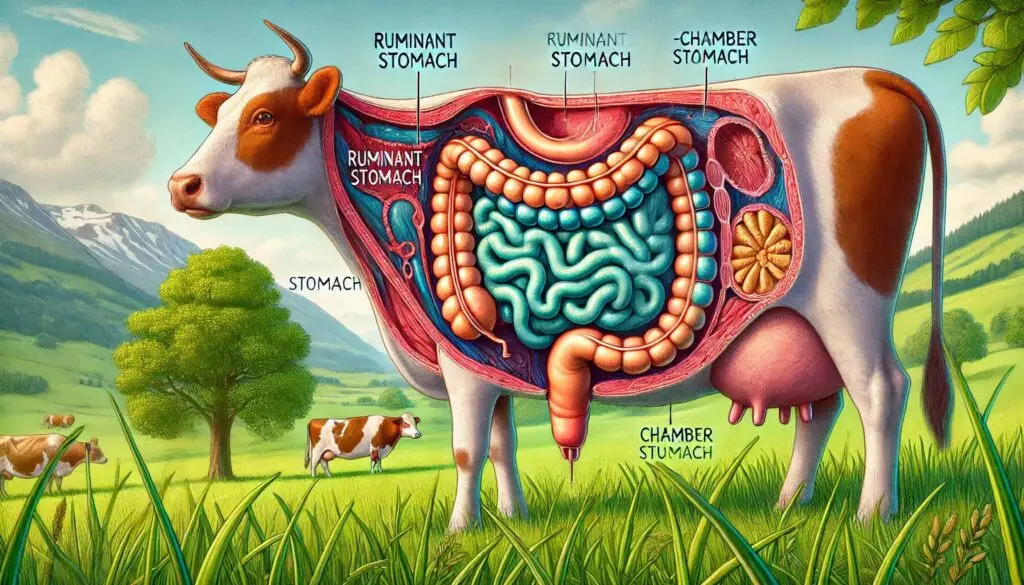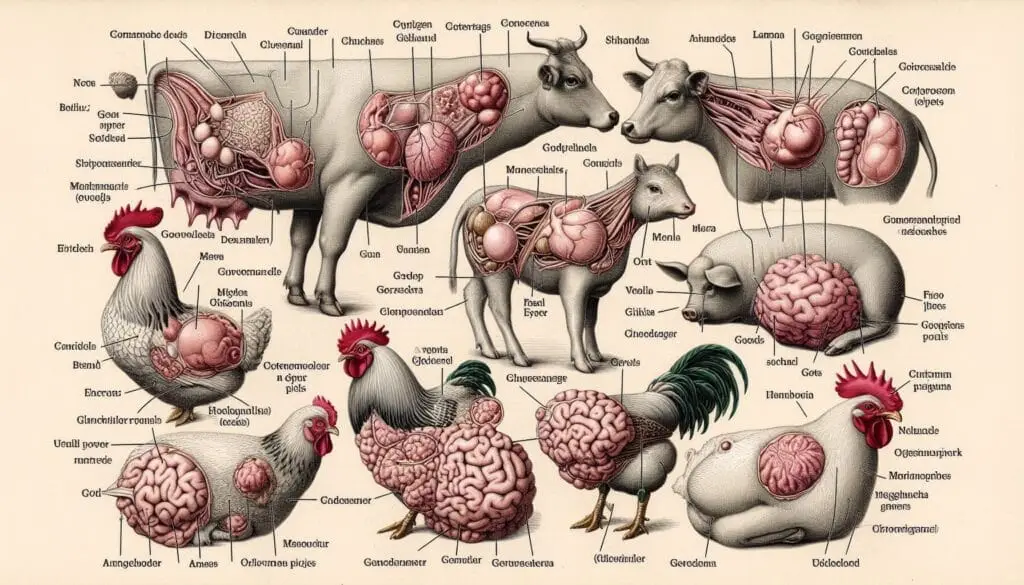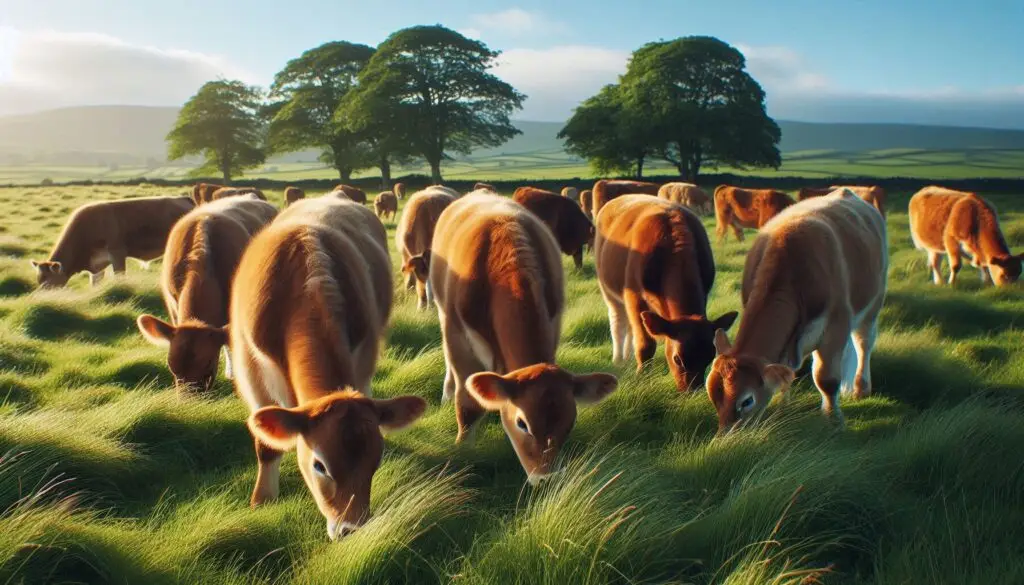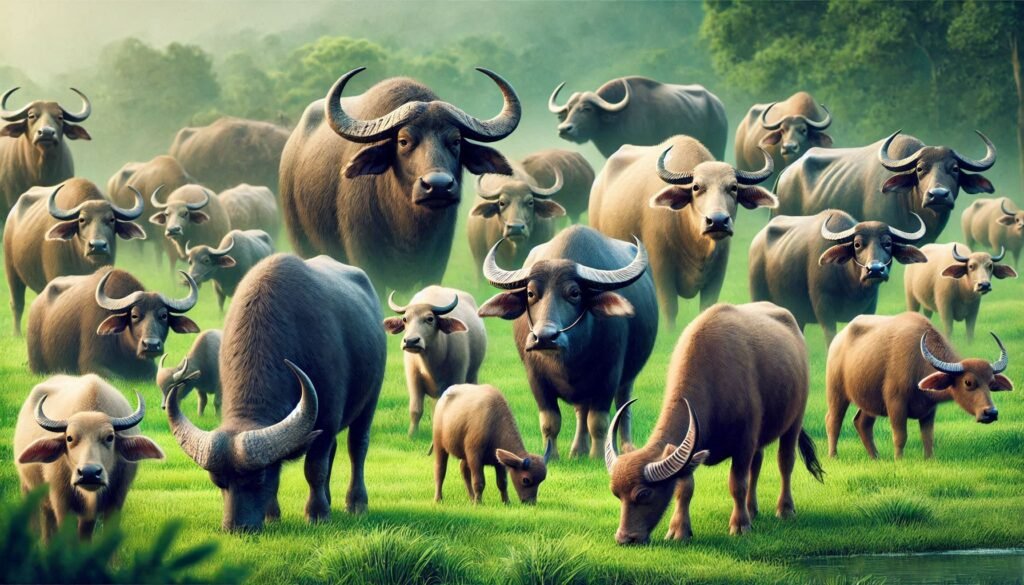Ruminant Stomach

The Unique Structure of the Ruminant Stomach
Ruminants have a four-compartment stomach that includes the rumen, reticulum, omasum, and abomasum. Each part plays a crucial role in digestion.
The Rumen: The Fermentation Chamber
The rumen is the largest compartment of the ruminant stomach. It can hold up to 50 gallons in mature cattle. This chamber acts as a fermentation vat where billions of microbes break down fibrous plant materials.
Microbial Fermentation Process
Microbial fermentation is essential for ruminants. Microbes in the rumen produce volatile fatty acids (VFAs) as they digest cellulose. These VFAs serve as the primary energy source for ruminants. For more information on microbial fermentation, check out this article on microbial digestion.
The Reticulum: The Hardware Stomach
The reticulum is located next to the rumen and collects smaller digesta particles. It also plays a role in trapping heavy objects that animals may accidentally ingest.
Importance of Cud Chewing
The reticulum facilitates rumination by allowing animals to regurgitate cud for further chewing. This process enhances digestion by mixing food with saliva, which contains enzymes that aid in breaking down carbohydrates.
The Omasum: The Water Absorber
The omasum is smaller than the rumen and reticulum but plays a significant role in water absorption. Its many folds increase surface area, allowing for efficient nutrient absorption before digesta moves to the next compartment.
Nutrient Processing in the Omasum
As digesta passes through the omasum, it undergoes further processing. This compartment helps remove excess water from the feed, making nutrients more concentrated for absorption in the next stage.
The Abomasum: The True Stomach
The abomasum is often referred to as the “true stomach.” It functions similarly to monogastric stomachs found in non-ruminant animals. Here, hydrochloric acid and digestive enzymes break down proteins and digest microbes from the rumen.
Enzymatic Digestion in the Abomasum
In this compartment, enzymes like pepsin begin protein digestion. For a deeper understanding of enzymatic digestion, visit this resource on protein digestion.
The Digestive Process: How It Works
The digestive process begins when ruminants consume forage. They chew their food only slightly before swallowing it into the rumen. Here’s how it works:
- Ingestion: Ruminants eat grass or other fibrous plants.
- Fermentation: In the rumen, microbes ferment the food.
- Cud Formation: Larger particles are formed into cud.
- Rumination: Animals regurgitate cud for further chewing.
- Digesta Movement: After chewing, digesta moves to the reticulum.
- Absorption: Nutrients are absorbed through the omasum and abomasum.
This multi-step process allows ruminants to extract maximum nutrients from their diet.
Nutritional Implications of Ruminant Digestion
Understanding how ruminants digest food helps farmers optimize livestock nutrition. Proper feeding strategies can enhance animal health and productivity.
High-Fiber Diets for Optimal Health
Ruminants thrive on high-fiber diets rich in roughage like hay and grass. These foods promote healthy rumen fermentation and support overall digestive health.
Balancing Nutrients
Farmers must balance nutrients carefully to ensure optimal growth and milk production. For more insights on livestock nutrition, refer to this article on livestock feeding strategies.
Common Digestive Disorders in Ruminants
Despite their efficient digestive systems, ruminants can face disorders such as bloat or acidosis if not managed properly.
Preventing Digestive Issues
To prevent these issues, farmers should monitor feed quality and adjust diets based on animal needs. Regular veterinary check-ups can also help maintain digestive health.
Conclusion: The Importance of Understanding Ruminant Stomachs
The ruminant stomach is a fascinating example of evolution at work. Its unique structure allows livestock to thrive on diets rich in fibrous plants. By understanding this complex system, farmers can improve animal health and productivity.
More from Veterinary Anatomy:
Interphase in the Cell Cycle





Responses